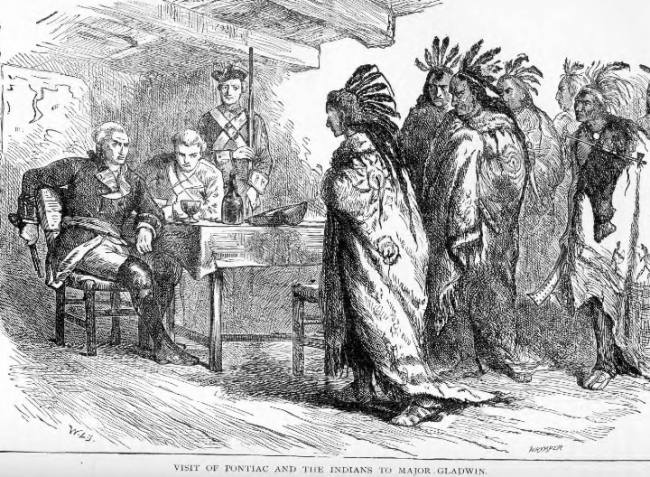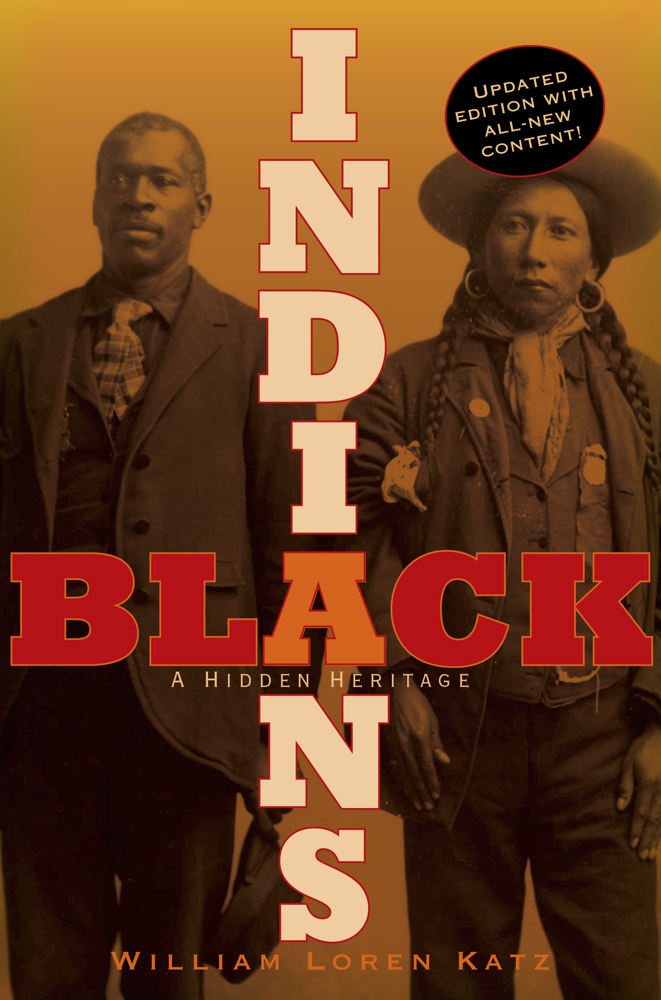In the Spring of 1763, when the Seven Years War (French and Indian War) ended and the French gave up their vast claims in North America, the indigenous nations around the Great Lakes encountered the new policies and colonial rule of the prevailing British. After a century of forming treaties and relationships with French colonists, they found themselves no longer dealing with France but with another, distant European nation that was intent on violently colonizing their land and their culture with an open disdain for Native diplomacy.

Odawa Chief Pontiac meets with Major-General Henry Gladwin, the British commander at Fort Detroit during the siege. Source: The Ohio History Connection
In May of that year, Odawa Chief Pontiac (Chief Obwandiyag) quietly and secretly organized Native tribes from the Alleghenies to the upper Great Lakes, to rise up against the British army and colonists. Pontiac was able to build a coalition of tribes, organizing across cultures, languages, and political organization, to bring war against the British when the threat of genocide and colonization superseded other political concerns.
One of the deadliest battles in Pontiac’s War (sometimes called “Pontiac’s Rebellion” or “Pontiac’s Conspiracy”) was the five-month siege on Fort Detroit. Chief Pontiac led Ottawas, Ojibwas, Potawatomis, and Hurons in a failed attempt to take the fort that was garrisoned by the English, but they claimed some victory in skirmishes around the Fort when reinforcements were called:
On July 31st, a group of about 260 British soldiers intent on breaking the siege attacked Pontiac’s nearby encampment along the creek. Pontiac’s forces fought off their attackers, killing commanding officer Captain James Dalyell in the process. In reference to the battle’s carnage, Parent’s Creek earned a new name — Bloody Run. Today, much of the stream runs underground, having been incorporated into the sewer system over the years. [Detroit Historical Society]
Despite the Native coalition’s success at the Battle of Bloody Run and elsewhere, like at Fort Michilimackinac, their victories were short-lived. The British claimed victory in 1766 when Pontiac signed a peace treaty with William Johnson, the British Superintendent of Indian Affairs. A Peoria warrior killed him several years later and historians theorize that Pontiac was resented, perhaps as a traitor, among some Native people after capitulating to their enemy.
The sources for this post include the Ohio History Connection, the Battle of Bushy Run historical society, and the book, Crucible of War: The Seven Years’ War and the Fate of Empire in North America, 1754-1766, by Fred Anderson. Read a full essay on Pontiac’s War, with more context for its causes and consequences, at the Ohio History Connection.











Twitter
Google plus
LinkedIn